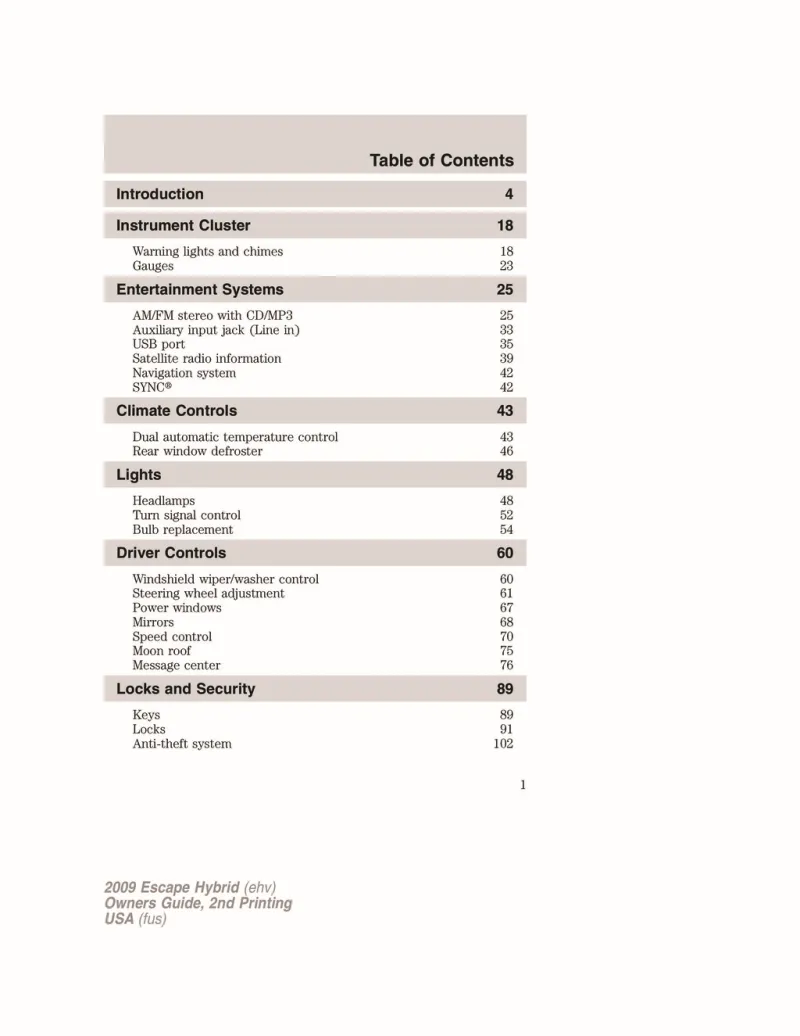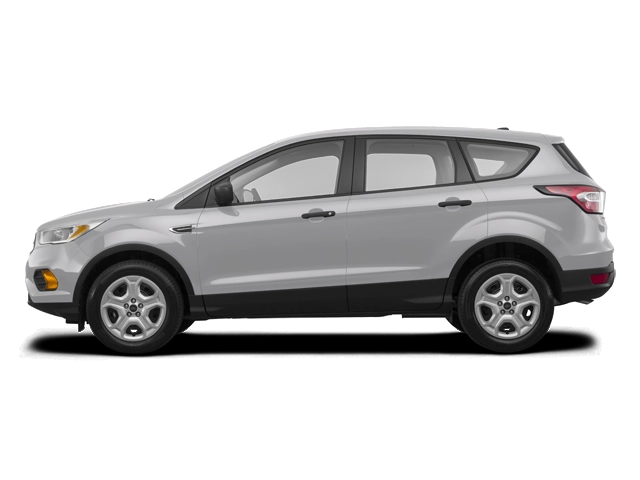2009 Ford Escape Hybrid Owner's Manual

Table of Contents
2009 Ford Escape Hybrid Overview
Introduction
The 2009 Ford Escape Hybrid marks a significant step forward in the world of compact SUVs, blending eco-friendliness with practicality to cater to a growing market of environmentally conscious drivers. Designed to deliver versatility, comfort, and efficiency, this model remains a top pick for those seeking a reliable and innovative vehicle capable of handling both urban and weekend adventures.
Powertrains
At the heart of the 2009 Ford Escape Hybrid is a sophisticated hybrid powertrain that combines a 2.5-liter four-cylinder engine with an electric motor. This combination yields an impressive 155 horsepower while ensuring outstanding fuel efficiency—boasting an EPA-estimated 34 mpg in the city and 31 mpg on the highway. The seamless transition between the gas engine and electric power provides both responsiveness and a reduction in emissions, making it an ideal choice for eco-minded drivers.
Trims
The Escape Hybrid is available in two distinct trims: the base Hybrid and the Limited Hybrid. The base trim comes well-equipped with essential features such as air conditioning, power windows, and a six-speaker audio system, while the Limited trim adds luxury touches like leather seating, premium sound systems, and enhanced technology options. Both trims offer ample cargo space and a comfortable interior, making it family-friendly and versatile.
Features
Standard safety features include front and side airbags, ABS, and an advanced stability control system, ensuring peace of mind during every drive. Technological advancements such as an optional navigation system, Bluetooth connectivity, and an available rearview camera enhance the overall driving experience. The hybrid model also showcases unique instrumentation that displays energy flow and efficiency metrics, empowering drivers with real-time information.
Owners Manual
The comprehensive owner's manual for the 2009 Ford Escape Hybrid serves as an invaluable resource for any owner. It covers essential maintenance guidelines, troubleshooting tips, and detailed information about operating all vehicle systems—from the hybrid powertrain to the entertainment features. This accessible manual ensures that drivers can make the most out of their vehicle while promoting longevity and performance.
User manual download
The Ford Escape Hybrid owner manual for the 2009 model year is to be found in PDF downloadable format on this page. The owner manual for the model year 2009 is free and in English, but the repair manuals are usually not easy to get and may cost more.
Manual Questions
Fill the form below and someone will help you!

